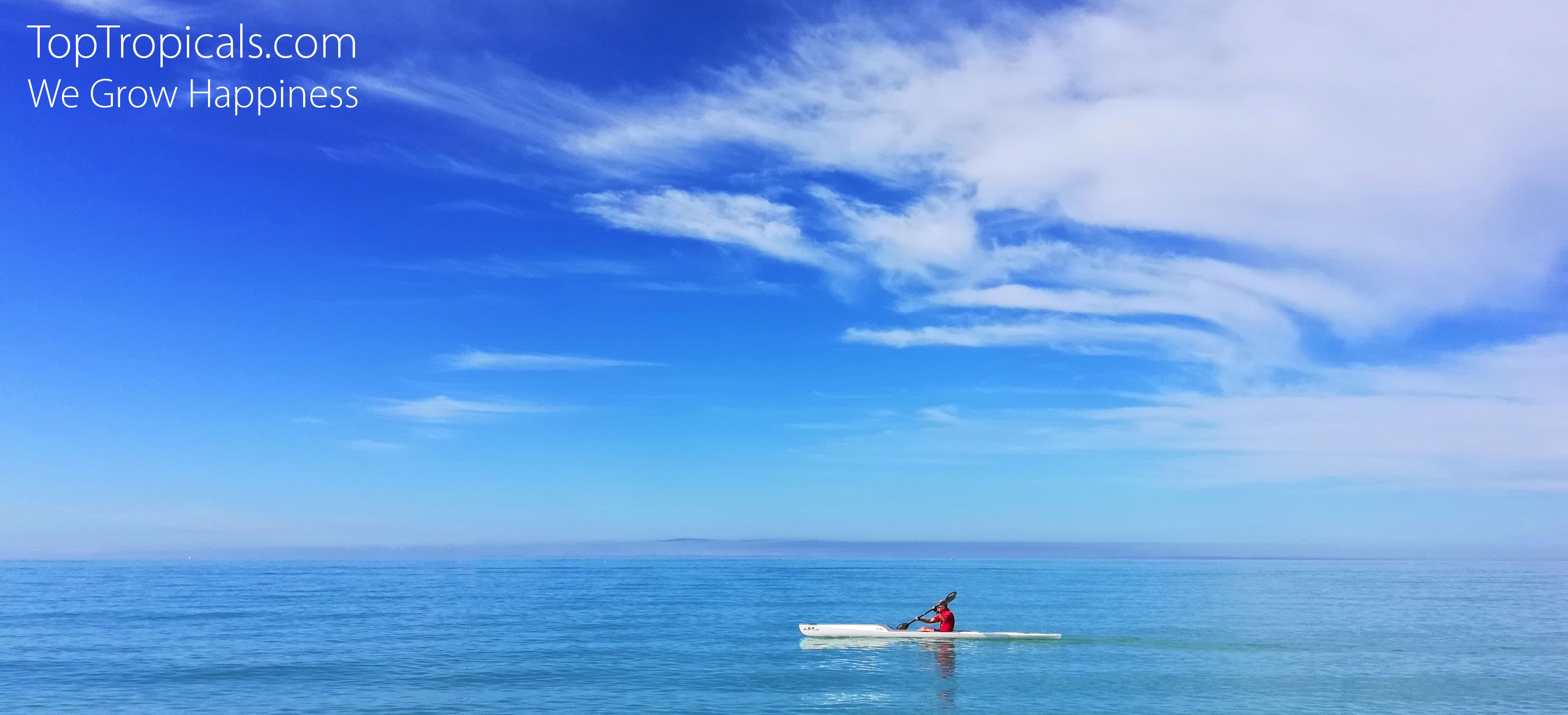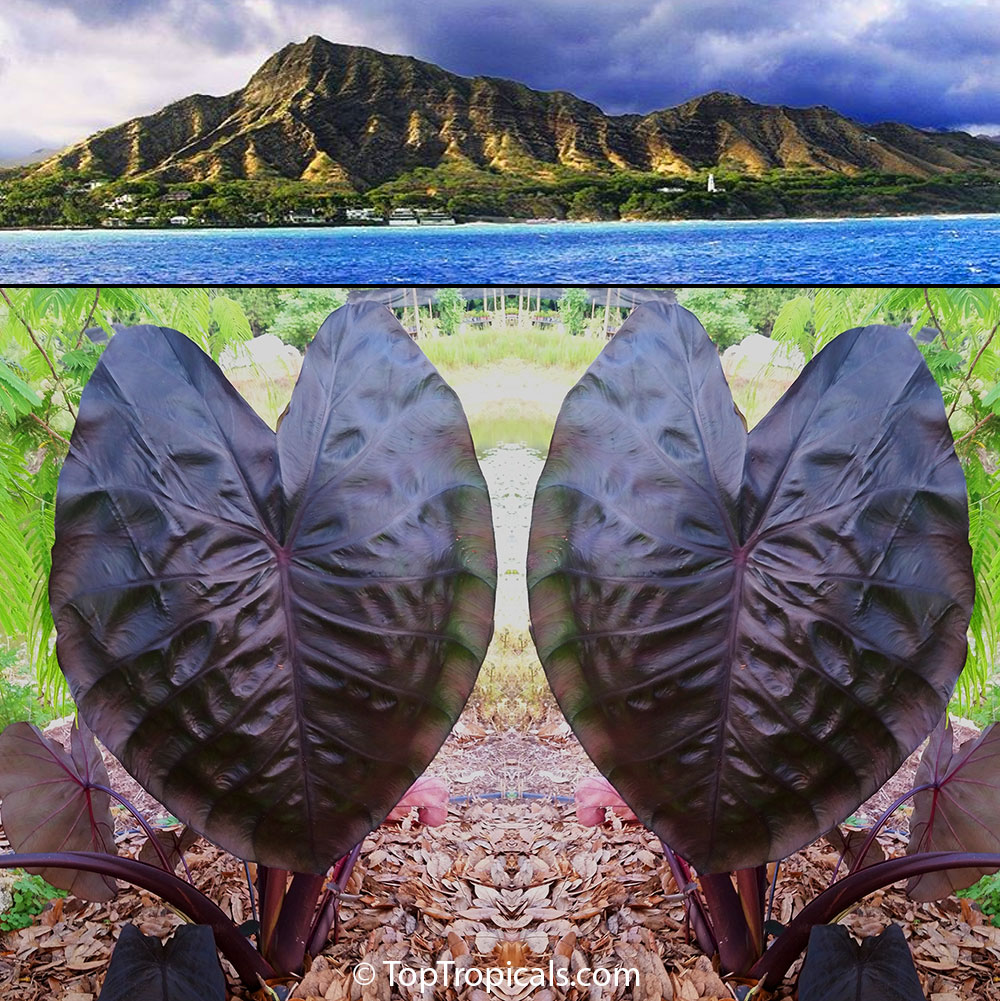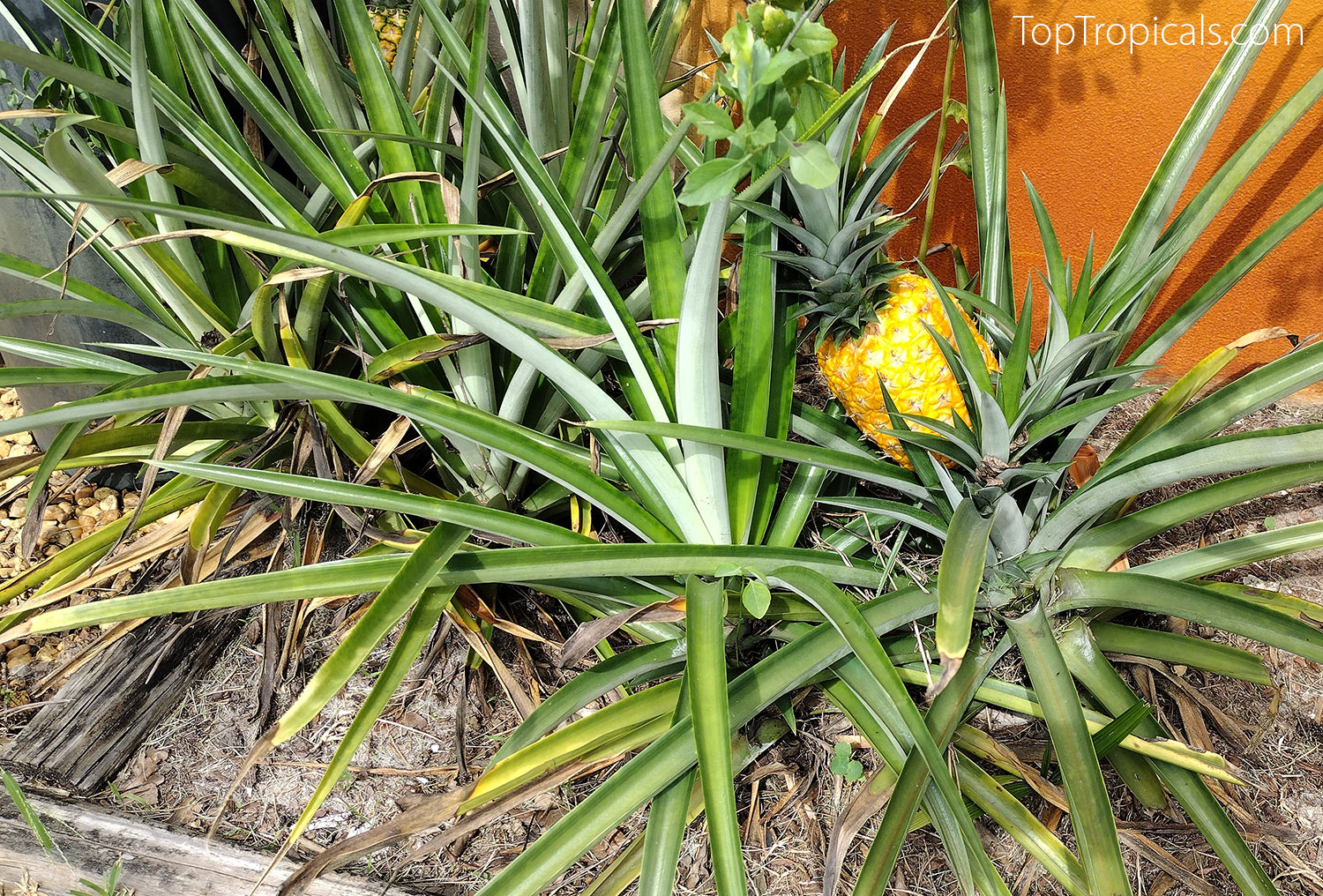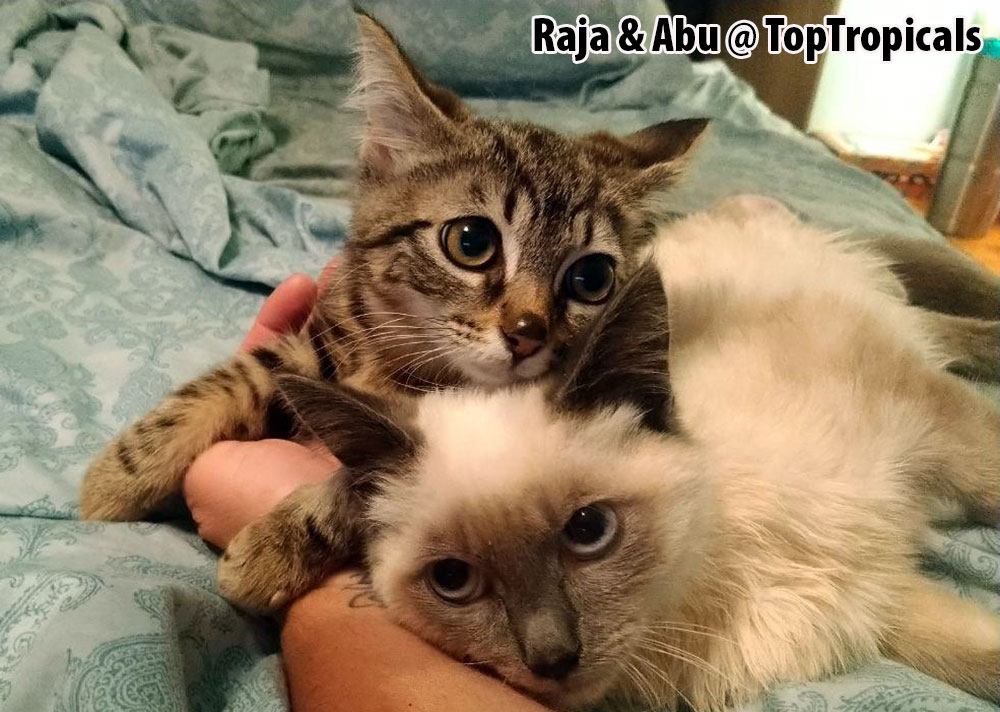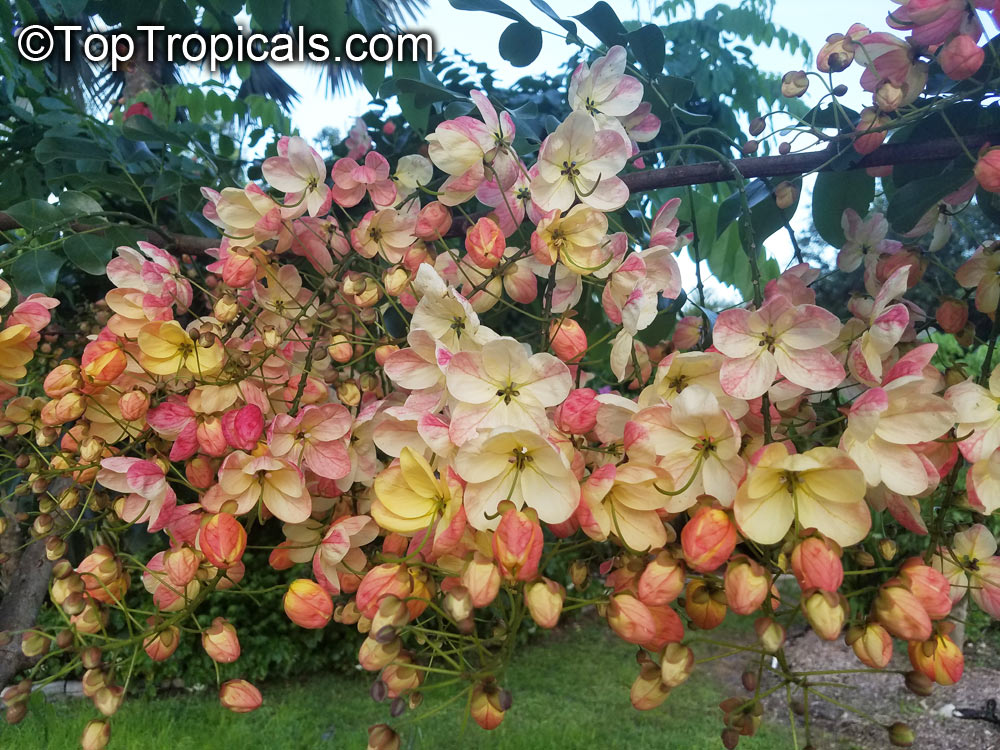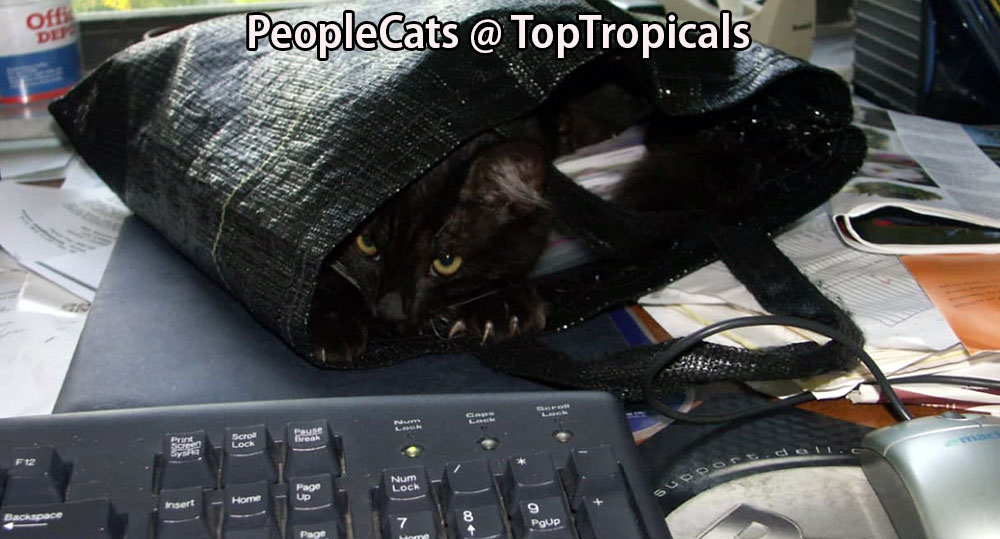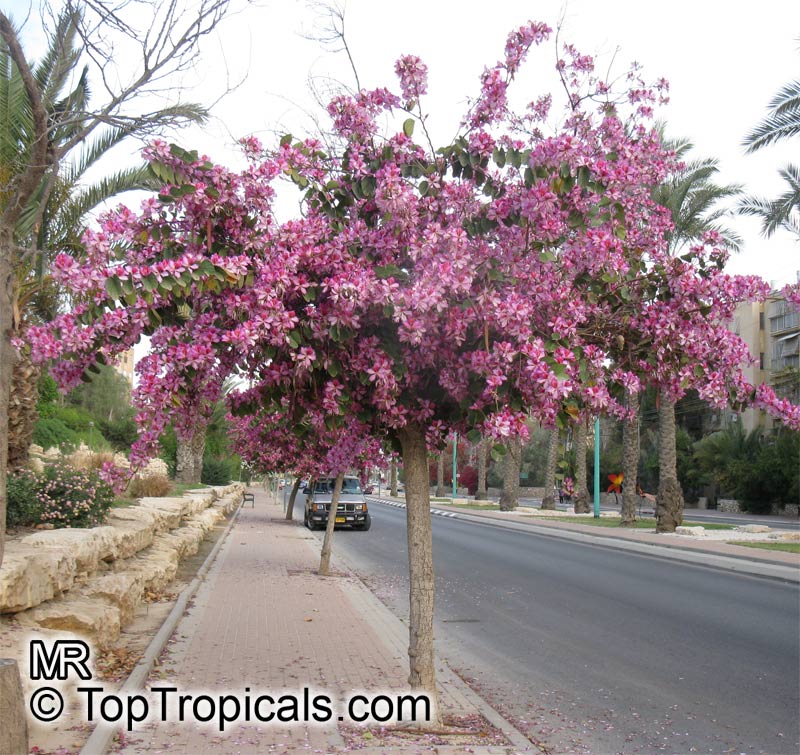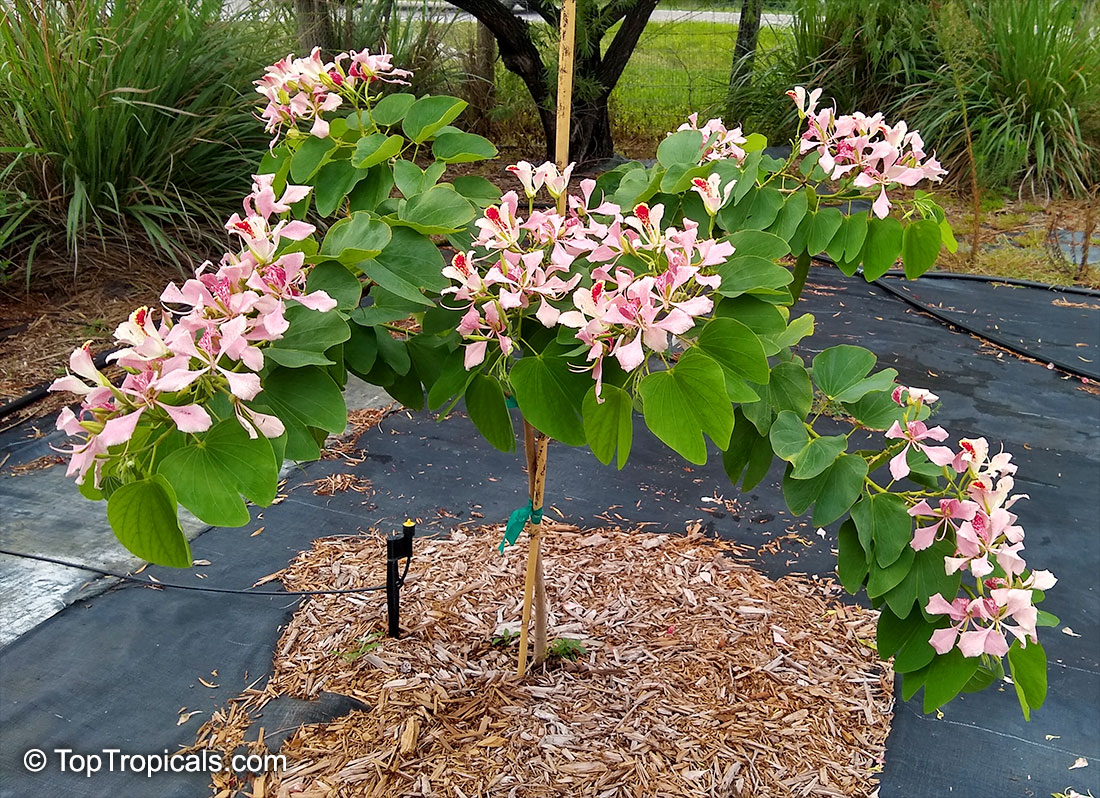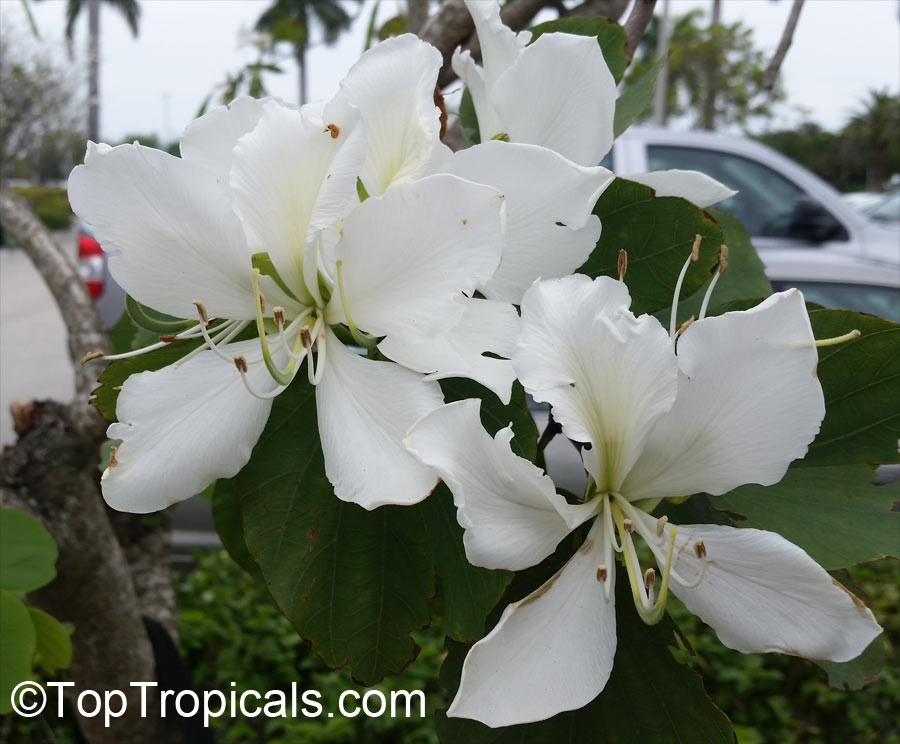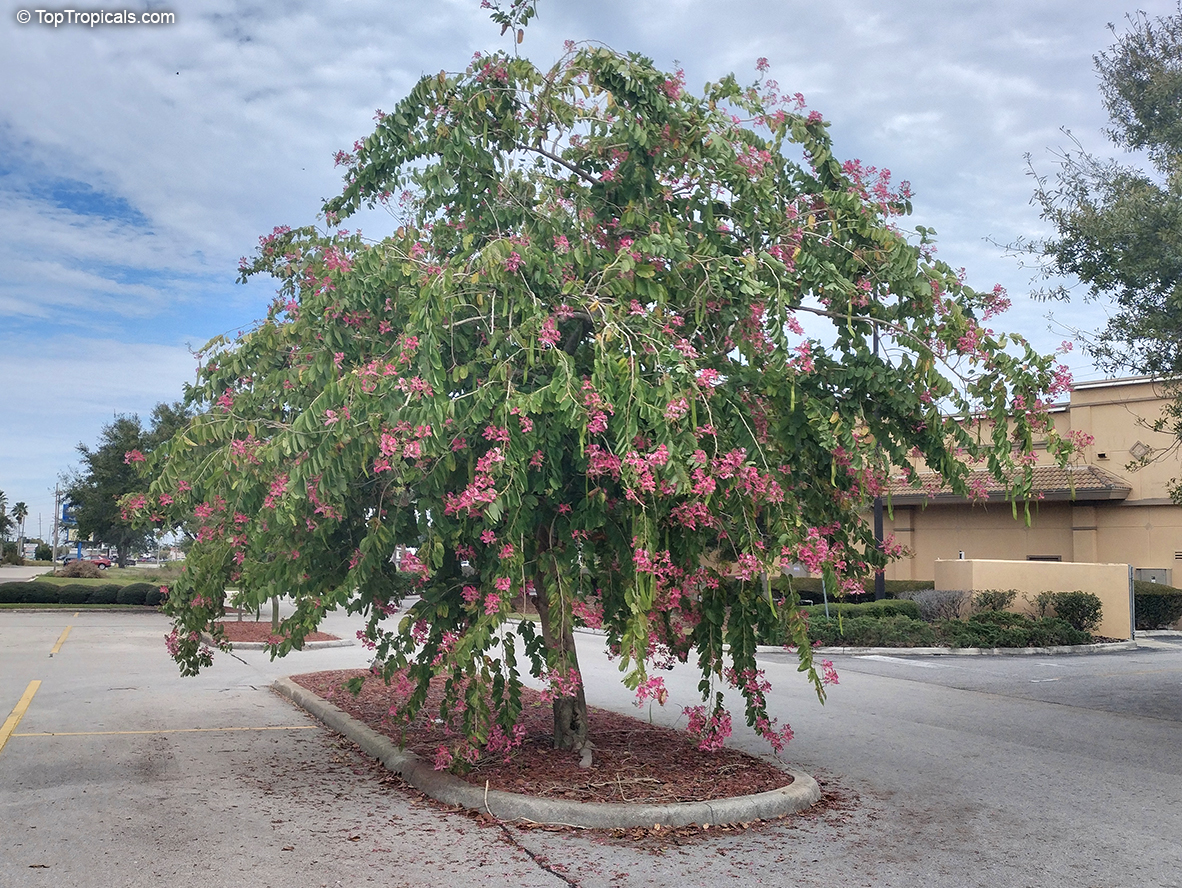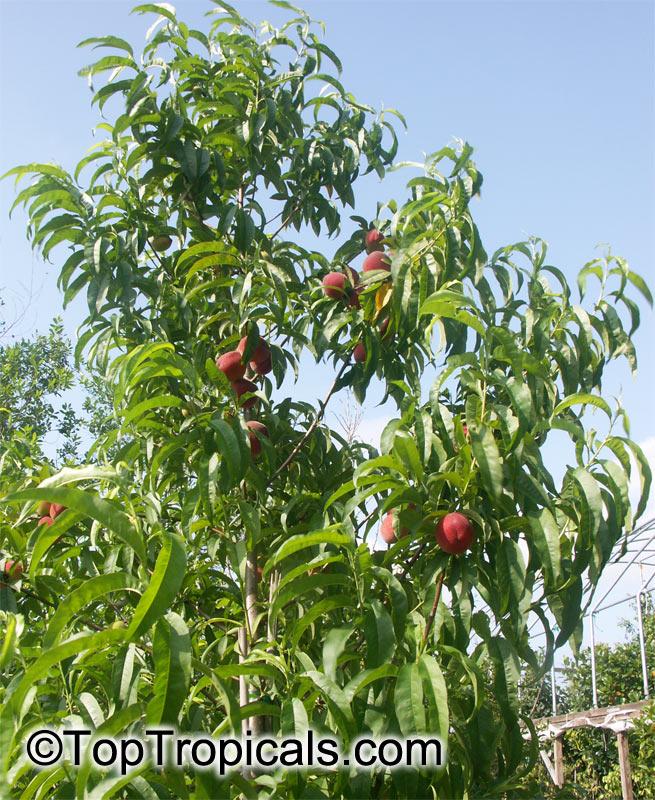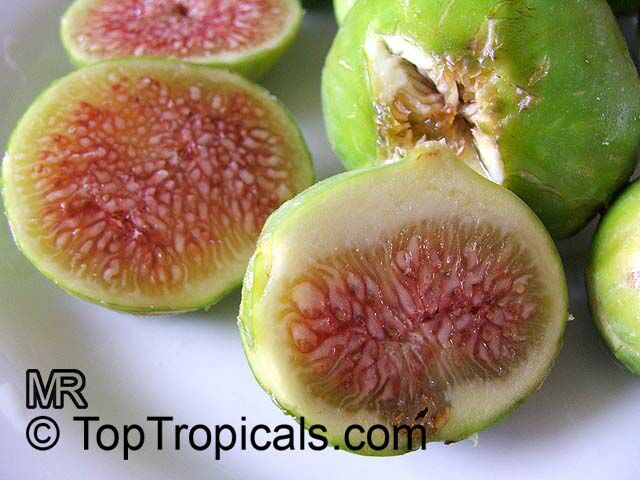Garden Blog - Top Tropicals
Date:
New Video:
Dwarf Guava Hawaiian Rainbow
Psidium guajava "Nana"
Put a little Aloha in your garden... A guava that will bring a taste of the Islands!
This is a very small version of the favorite aromatic Guava - Nana. It grows only up to 5-6 ft tall with a short trunk and a branching, bushy habit. It is perfect for those who have limited space. It can be grown in a pot and fruits heavily. Provided with warm conditions, the tree can bear fruit almost year around. The fruit is round, about 2", pretty good size for a dwarf tree. The flesh is sweet, aromatic, and
varies from white to yellow to pink.
Subscribe to our Channel:
Stay updated with TopTropicals Videos by subscribing to our channel at YouTube.com/TopTropicals and get our latest video news of what is fruiting and blooming!
Date:
Easy Sunday Morning Deals: Dwarf Guava Hawaiian Rainbow
Saving on your favorite plants is Easy.
Easy like Sunday Morning...
..."A ' ohe loa i ka hana a ke aloha.
Distance is ignored by love..."
- Toni Polancy -
It's time for our favorite day and another Easy stroll through Top Tropicals Garden with savings of
50% and MORE!
Put a little Aloha in your garden....
Two Exotics from Paradise
It may be cold where you are, so take a trip with us to the Hawaiian Islands. Tropical breezes,
soothing ocean waves and an unbeatable selection of tropical plant treasures...
This week we bring the Aloha to you. A guava that will bring a taste of the
Islands and a spectacular variety of Majestic Taro.
Dwarf Guava Hawaiian Rainbow
- Ready to fruit this year! -
This is a very small version of the favorite aromatic Guava - Hawaiian Rainbow Nana. It grows only up to 5-6 ft tall, perfect for limited space. It can be grown in a pot and fruits heavily almost year around. The flesh is sweet, aromatic, and varies from white to yellow to pink.
Colocasia Diamond Head
- Large Developed plants! -
Diamond Head is a spectacular variety of Taro is named after the volcanic cone on the Hawaiian island of Oahu - both the cone and plant are black and lustrous! Mature plants form a well-behaved clump and reach 3 to 4 feet tall, with leaves up to 2 feet wide! A must for black plant fanatics. Grows more compact that other Colocasias and no two leaves are the same!
Colocasia Diamond Head,
regularly $42.95,
is on Easy Sunday sale for only $21.48
Dwarf Guava Hawaiian Rainbow, regularly $52.95,
is on Easy Sunday Sale for only $26.48.
Combine the two for maximum Aloha and save even more:
only $42.95 for both - one plant comes FREE!
Remember, the Easy Sunday Deal expires on Monday January 17th.
Date:
News arrivals: Adenium Rainbow
Collect them all!
Exciting news: Fresh Adenium arrivals straight from Thailand! Behold an array of breathtaking varieties in an explosion of colors.
Adeniums are a must-have for gardeners, with enthusiasts avidly collecting diverse strains. These resilient plants flourish in pots, whether adorning outdoor gardens or brightening indoor spaces. With their charming compactness and eye-catching caudex, Adeniums effortlessly spark conversation and make memorable gifts.
Every year, new hybrids emerge, boasting double and triple blooms in an array of captivating hues - think vibrant reds, pinks, yellows, regal purples, and even dramatic blacks. Each variety is a masterpiece, showcasing unique patterns from dots to stripes to variegations.
Act fast - quantities are limited! Seize the opportunity to expand your collection now!
Photo above: selected varieties that just have arrived.
Date:
Top varieties of pineapples
Q: I want to grow my own pineapples, which varieties do you recommend for the best production? Do I need any special organic fertilizer?
A: Growing your own pineapple is pure bliss. Watching the transformation from a small crown
into a luscious fruit is immensely rewarding. Every tropical gardener should
experience the joy of growing this tropical gem and relishing its sun-kissed
sweetness straight from the garden. Pineapples are easy to grow and can
fruit in containers too, so if you live in a colder climate, no problem! They
will take very little space in your greenhouse or sunroom. Just remember to feed
your pineapple plants with Sunshine Boosters so they will feed you the biggest and the sweetest
fruit! Sunshine Boosters are natural, organic-amino-acid based plant nutrients
that are perfect for any edibles.
There are several varieties of pineapples in commercial cultivation. Below
are the most interesting cultivars. Discover the pineapple paradise!
Elite Gold: Bursting with tropical flavor and vibrant gold flesh, Elite Gold dazzles with its unique taste and ornamental beauty.
Florida Special: Perfectly balanced sweetness and acidity, this variety thrives in warmer climates, gifting you a taste of Florida's sunshine.
Sugar Loaf: Irresistibly sweet with a hint of citrus, Sugar Loaf's compact size makes it an ideal choice for container gardening.
White Jade (Spineless Sweet): Exceptionally sweet and without spines, White Jade pampers you with a delectable, thorn-free harvest.
Lava Burst (Burgundy Variegated Rainbow): This visually stunning ornamental pineapple variety boasts striking burgundy and green leaves, resembling a rainbow of colors. Its fruit edible but small; its exceptional beauty adds a touch of exotic elegance to any garden or indoor space. Lava Burst is a delightful conversation starter and a captivating addition to your plant collection, making it a favorite among pineapple enthusiasts for its aesthetic appeal.
Embrace the sense of accomplishment and the satisfaction of savoring homegrown, mouthwatering pineapples - nature's sweetest gift!
Read more about Pineapples: The most luscious Hospitality Fruit.
Date:
5 most rewarding tropical fruit trees
Top Tropicals @ Garden America Radio Show
...The most popular garden radio show Garden America is featuring Top Tropicals topic "5 most practical and rewarding fruit trees for subtropical areas".
1)
Jackfruit Orange Crush (Artocarpus heterophyllus)
...We recently obtained this variety and it is hands down the best Jackfruit we ever tasted. It is
crunchy, sweet, aromatic, with bright orange pulp...
2)
Dwarf Guava Hawaiian Rainbow (Psidium nana)
- A very small version of the favorite aromatic Guava.
- Grows only up to 5-6 ft tall with a short trunk and branching, bushy habit.
3)
Yellow Pitaya, Dragon Fruit (Selenicereus megalanthus)
- This particular species of Dragon fruit is the sweetest and has great
flavor unlike most pitayas
- doesn't mind regular water and rains but is also drought-tolerant
4) Loquat (Eriobotrya japonica)
- Can be kept as a very compact tree, and fruits in a pot.
- Flowers and fruits right away. The plants are covered with flowers now
and setting fruit.
- Very cold hardy to upper 20's, drought tolerant, fast growing
5) Macadamia Nut
(Macadamia integrifolia x tetraphylla)
- The most delicious and popular sweet nuts that are usually so expensive,
can be produced in your garden!
- Cold hardy, fast growing, and very productive.
Listen to Facebook-Live Show (recording):
Date:
PeopleCats of TopTropicals. Cat of the Day: Story of Raja, Part 2
Everybody was touched by the tragic story of Raja - the kitten Kristi rescued from the tough street
challanges and gave her a chance for Life...
Today we continue this story. And although it is a sad one, there will be a
happy ending, and there will be always lessons we learn from the experience
of taking care of our loved once.
Raja taught us to never let our disabilities define what we can and can't
do. She taught us that every live creature deserves to know what love, a warm
home, and a family means. She taught us resilience, determination and
perseverance. Sometimes goodbye is not always an end, but a possible new beginning
with new lessons learned...
CONTINUE READING >>
In the photo: Raja's Rainbow Cassia
TopTropicals PeopleCat Club and Zoo
Thank you for supporting us in helping PeopleCat Community!
Make
your kind donation today and receive a surprise gift from us! Every little
bit helps. Thank you and God bless you and your pets!
What orchids can be grown in the ground?
Spathoglottis Tropical Punch - Sorbet Ground Orchid
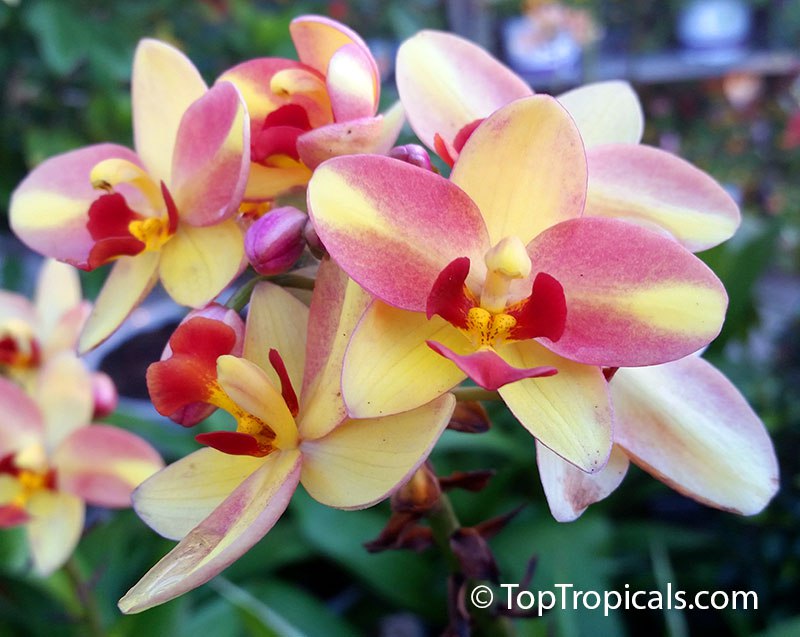
Spathoglottis Tropical Punch - Sorbet Ground Orchid
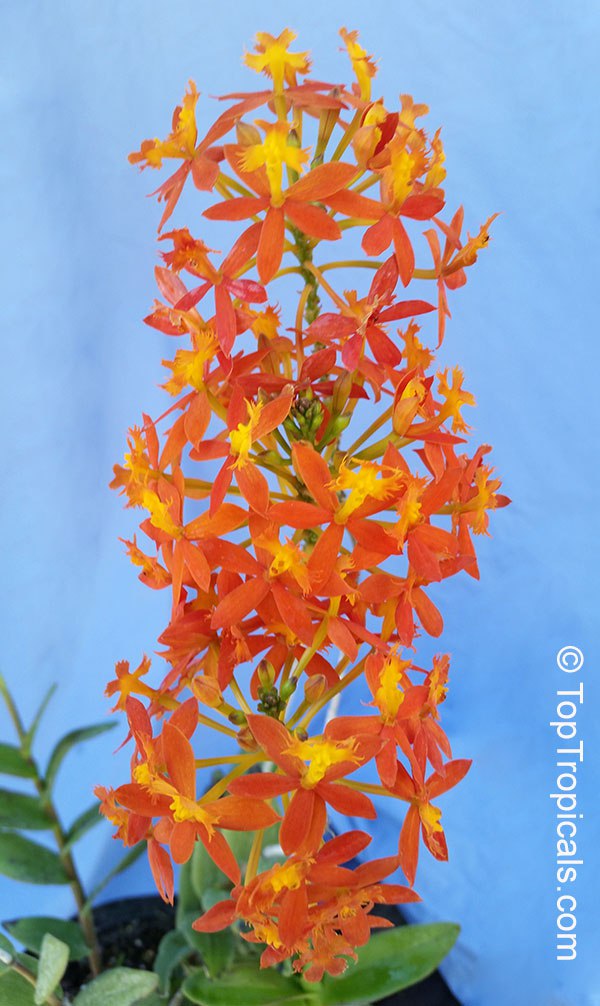
Epidendrum radicans - Orange Reed Ground Orchid, Sunrise
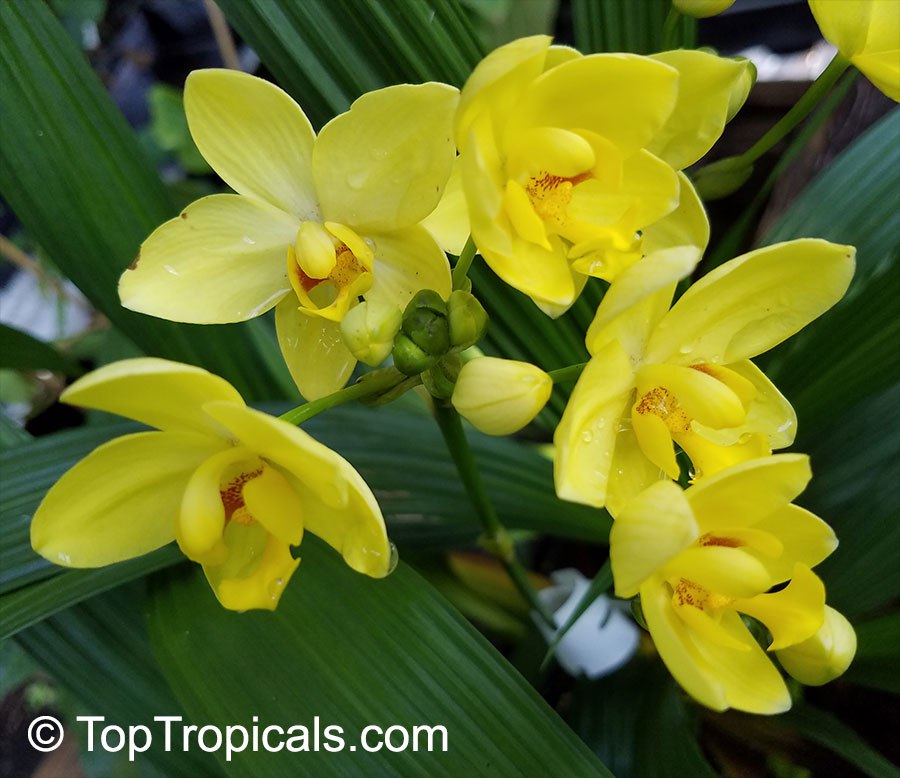
Spathoglottis Lemon Kiss - Sorbet Ground Orchid

Bletilla striata x formosana Kate - Yokohama Ground orchid
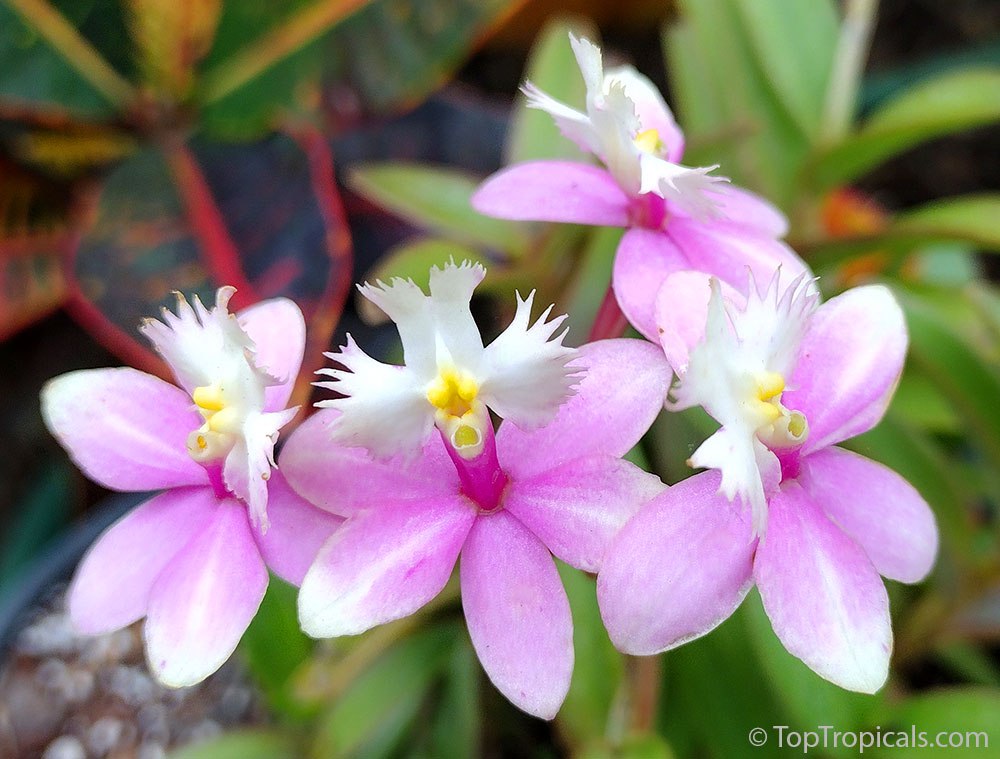
Epidendrum elongatum x radicans - Lavender Reed Ground Orchid

Spathoglottis Rainbow - Sorbet Ground Orchid
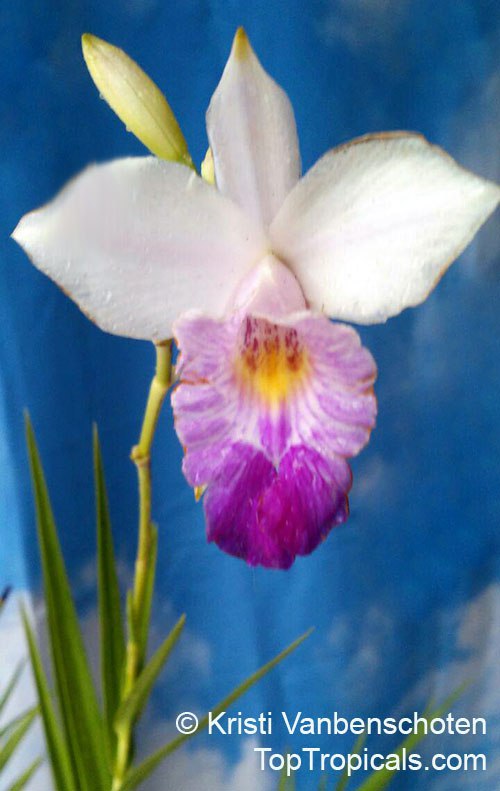
Arundina graminifolia - Bamboo Orchid, Bird Ground Orchid
Orchids have a mystique that seems to set them apart from most other flowers... they are elegant and almost unreal in their perfection... But not every gardener has luck growing traditional orchids.
- ⚜️ Terrestrial orchids (a.k.a. ground orchids) grow in regular garden soil instead of in the air on tree branches!
- ⚜️ Ground orchids come in many colors and shapes.
- ⚜️ Ground orchids will be happy to bloom in sun or shade and are very easy to grow!
🎥 Watch YouTube: Ground Orchids
🛒 Order Ground Orchids
#Shade_Garden #Container_Garden
🏵 TopTropicals
Date:
Growing Bougainvillea and Plumeria in Florida
Q: I have recently moved from New Jersey to Florida (Orlando area) and I am so excited to start my own Tropical Paradise Garden! A few years ago I visited Hawaii and saw many beautiful colorful Bougainvilleas as well as fragrant Frangipani. Do they grow well in Florida? These are flowers of my dream!
A:
Both Bougainvillea and Plumeria grow well in most
parts of Florida, especially South and Southwest.
Bougainvillea can tolerate some light freeze and can be
seen in the streets of Central Florida (young plants
require some cold protection for the first year), so it is
a very good candidate for your new garden. Keep in mind
that unlike in Hawaii, where they bloom year around,
Bougainvilleas tend to have a distinctive flowering season
which in Florida is winter time - these plants enjoy dry
weather that triggers their bloom. To enjoy Bright
bougainvillea flowers for a long time, apply balanced fertilizer, prune
regularly (this promotes flowering on new growth) and keep
established plants on a dry side. Dwarf cultivar Pixie is super compact and
can be grown in pots or in a small garden without any
pruning! See photo of Pixie on the left.
Plumerias, all-time perfume
favorites and symbols of Hawaii, are also residents of
many gardens and collections throughout state of Florida.
Their cold hardiness is close to the one of Bougainvillea,
however keep young plants protected from frost. There are
also many new exciting cultivars including multiple
"rainbow" colors, and several dwarf varieties, some of
them are evergreen - Plumeria obtusa. Plumerias
are very undemanding and can stay happy and blooming in a
pot and without regular watering. Give them as much sun as
possible, and enjoy the fragrance for many months!
Date:
Bauhinias: trees with Orchid Flowers
and Butterfly Wings...
Photo above: Bauhinia variegata - Purple Orchid Tree, one of the most spectacular varieties.
Q: We just moved to Florida and I see these beautiful trees with large purple flowers. I was told these are Orchid trees, do you have them?
A: Bauhinias, commonly known as Orchid trees, are renowned for their captivating flowers and unique foliage. These trees typically grow to a moderate height of 15-25 feet with a spread of 10-15 feet, showcasing a rounded to vase-like shape. Thriving in hardiness zones 9-11, they exhibit resilience to heat and can withstand mild frost. There are over 300 species of Bauhinia, which are distributed in tropical and subtropical areas. These species vary in characteristics such as size, foliage, and flower color, contributing to the diversity and appeal of this genus. You can find them as trees, shrubs, and even vines.
Bauhinias are evergreen (in tropics) to semi-deciduous (in cooler climates), offering year-round beauty with intermittent blooming cycles. The peak bloom time varies depending on the species and location, often occurring in late winter to early spring, bedecking the tree with striking orchid-like flowers in hues ranging from white and pink to purple and red. The flowers boast delicate petals with intricate patterns, resembling the elegance of true orchids.
One of the distinguishing features of Bauhinia leaves is their unique bi-lobed or bilobed structure, which gives them a distinct appearance. The leaves are deeply divided, typically into two lobes or halves, hence the common name "Butterfly tree" due to their resemblance to butterfly wings. This characteristic is often used as an identifying trait for Bauhinia species. The bilobed leaves add to the visual appeal of the tree, contributing to its ornamental value in addition to its beautiful flowers.
Photo above: Bauhinia monandra - Napoleons Plume, starts flowering in small size. This one is very beautiful but the most cold sensitive and should be grown in pots in areas with winter freeze. It will happily bloom in container!
Low-maintenance by nature, Bauhinias require minimal upkeep. Annual feeding with a balanced fertilizer enhances growth and flowering. Pruning is generally optional but can be done in late winter or spring, after flowering, to maintain shape or remove dead or damaged branches. These trees thrive in full sun, preferring well-drained soil. With their enchanting blooms and easy care requirements, Bauhinia orchid trees are a delightful addition to any landscape, and a colorful specimen for tropical winter gardens.
In addition, Orchid trees grow fast and provide excellent shade. They can make a shady spot in your garden in no time, giving relief from the hot sun. This is really valuable, especially in places where it gets very hot. So, not only are Orchid trees pretty to look at with their lovely flowers, but they're also great for keeping you cool!
Read more about Bauninias:
Bauihnias: Orchid trees with Butterfly flowers... and leaves
Photo above: Bauhinia x alba (candida) - White orchid tree, the most cold hardy variety that can take light freeze once established.
Photo above: Bauhinia purpurea - Purple Orchid Tree, one of the most popular and easy trees in Southern landscapes.
Date:
The most rewarding hardy fruit trees
Q: Recently I started working remotely and I kinda like it, no need to commute, it saves me so much time so I can have life now! My friend got me involved into growing some small houseplants but I really want to take advantage of our Florida climate and sun. I want to plant some cool fruit trees since I have a decent size yard. But I live in Florida Panhandle and we do have some occasional freeze in winter, although not for too long. But it gets very hot in summer! Are there any tropical fruit trees that will be happy here? Or should I keep everything in pots? I am excited to have my own tropical plant collection!
A: There is a perfect plant for everyone, and a perfect tree for every climate. Many tropical and especially subtropical plants can be much hardier than they are believed to be, both flowering and fruiting trees among them. You may keep the most sensitive species in pots and bring them inside for winter, while there are so many trees that will be happy in your area. Start with these that are perfect for climates with hot summers and cool winters:
1. Peaches and Plums
Low-chill, Heat-tolerant Peaches, Nectarines, Plums are especially selected for Florida hot summers. They produce well and do not require many "chill" hours like temperate fruit trees. They only need 150 chill hours and grow well in even in Arizona, so you know they are taking the heat.
2. Figs
2) Fig trees - they are easy to grow, heat- and drought- resistant trees. They are prized for their delicious fruit, which can be one to three inches in length, violet, brown or black. There are even varieties with yellow fruit. Most fruits are borne from early summer to late fall on new growth, and the fruits generally mature very quickly. These trees are sensitive to frost only when actively growing, but can withstand 10F when dormant. Read more about Fig trees.

